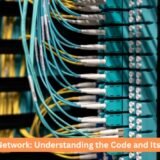Learn To Sit Back And Observe. Not Everything Need – Tymoff
In the fast-paced, hyper-connected world we live in today, the ability to pause, sit back, and observe has become a rare and undervalued skill. The modern age often emphasizes constant action, immediate responses, and perpetual engagement, leaving little room for quiet contemplation or passive observation. Yet, there is immense wisdom in learning to sit back and observe, understanding that not everything requires a reaction or intervention. This article delves into the significance of this approach, exploring its benefits and providing practical advice on how to incorporate it into daily life.
The Power of Observation
Observation is more than just seeing; it involves perceiving, analyzing, and understanding the nuances of a situation. It requires a heightened awareness of one’s surroundings and an ability to process information without the compulsion to act immediately. The practice of observing without reacting can lead to deeper insights and more thoughtful decision-making.
Benefits of Observing Without Reacting
- Improved Decision-Making: When we take the time to observe, we gather more information and can make better-informed decisions. Rushed decisions often lead to mistakes, while a measured approach allows for consideration of all factors.
- Reduced Stress: Constantly feeling the need to react can be mentally and emotionally exhausting. Learning to sit back and observe can reduce stress by alleviating the pressure to respond immediately to every stimulus.
- Enhanced Relationships: In personal and professional relationships, being a good listener and observer can improve communication and understanding. It allows us to better comprehend the needs and perspectives of others.
- Personal Growth: Observation promotes self-awareness and introspection. It helps us understand our own behaviors and reactions, fostering personal development and emotional intelligence.
Practical Steps to Cultivate Observation

Mindfulness and Meditation
Mindfulness practices and meditation are powerful tools to enhance observation skills. These techniques train the mind to focus on the present moment, notice details, and become more attuned to one’s thoughts and surroundings without the urge to react.
- Mindfulness Exercises: Engage in daily mindfulness exercises, such as focused breathing, body scans, or mindful walking. These activities encourage a state of active observation and present-moment awareness.
- Meditation: Regular meditation practice can help cultivate a calm and centered mind. Techniques like mindful meditation, where one observes thoughts and sensations without judgment, can be particularly beneficial.
Practice Active Listening
Active listening is a key component of observation. It involves fully concentrating on what is being said rather than passively hearing the message. This skill can be developed through:
- Eliminating Distractions: When listening to someone, remove potential distractions to focus entirely on the speaker.
- Asking Clarifying Questions: Show genuine interest by asking questions that encourage the speaker to elaborate.
- Reflecting Back: Paraphrase or summarize what the speaker has said to ensure understanding and demonstrate attentiveness.
Embrace Silence
Silence can be a powerful tool for observation. It allows us to process information, reflect on experiences, and gain new perspectives. Incorporate periods of silence into your routine by:
- Creating Quiet Time: Set aside time each day for quiet reflection, free from the distractions of technology and conversation.
- Practicing Silent Activities: Engage in activities that promote silence, such as reading, writing, or nature walks.
Observing in Different Contexts
In Personal Relationships
In personal relationships, learning to sit back and observe can lead to greater empathy and understanding. By observing non-verbal cues, body language, and emotional states, we can respond more thoughtfully and compassionately.
- Family Dynamics: Observe family interactions to understand underlying tensions or unspoken needs. This can help in addressing issues more effectively.
- Friendships: Pay attention to changes in friends’ behaviors or moods. This can provide insights into their well-being and strengthen the support you offer.
In Professional Settings
In the workplace, the ability to observe without immediate reaction can enhance leadership and team dynamics. It allows for strategic thinking and better problem-solving.
- Meetings: During meetings, observe the dynamics between team members. Notice who speaks most often, who remains silent, and any non-verbal communication. This can provide valuable insights into team morale and dynamics.
- Conflict Resolution: When conflicts arise, take a step back to observe the situation fully before intervening. Understanding the root causes and perspectives involved can lead to more effective resolution strategies.
In Everyday Situations
Applying the principle of sitting back and observing can transform everyday experiences. It can lead to a more mindful and intentional way of living.
- Public Places: In public places, practice observing people and surroundings without judgment or haste. Notice the details and dynamics around you.
- Personal Habits: Observe your own habits and routines. Reflect on whether they serve your goals and well-being, and consider changes if necessary.
Overcoming Challenges to Observation
While the benefits of learning to sit back and observe are clear, putting it into practice can be challenging. Modern life’s demands and the pervasive culture of instant gratification can make it difficult to adopt this approach.
Patience and Persistence
Developing observation skills requires patience and persistence. It’s a gradual process that involves retraining the mind to pause and reflect rather than react.
- Set Realistic Goals: Start with small, achievable goals. For example, aim to practice mindful observation for five minutes each day and gradually increase the duration.
- Celebrate Progress: Acknowledge and celebrate small milestones in your journey toward becoming a better observer.
Addressing Discomfort
Sitting back and observing can sometimes bring discomfort, especially if we are used to constant activity. It may reveal things about ourselves or others that we find challenging.
- Embrace Discomfort: Recognize that discomfort is a natural part of growth. Use it as an opportunity to deepen your understanding and resilience.
- Seek Support: If you find the process particularly challenging, consider seeking support from a mentor, coach, or therapist who can provide guidance and encouragement.
Conclusion
Learning to sit back and observe, understanding that not everything requires a reaction, is a powerful approach that can enhance various aspects of life. It fosters better decision-making, reduces stress, improves relationships, and promotes personal growth. By incorporating mindfulness, active listening, and periods of silence into our daily routines, we can cultivate this valuable skill. Embracing the power of observation can lead to a more thoughtful, empathetic, and fulfilling life, reminding us that sometimes the best action is inaction. So, take a step back, observe, and let the wisdom of quiet contemplation guide you.
Read also: check





























































